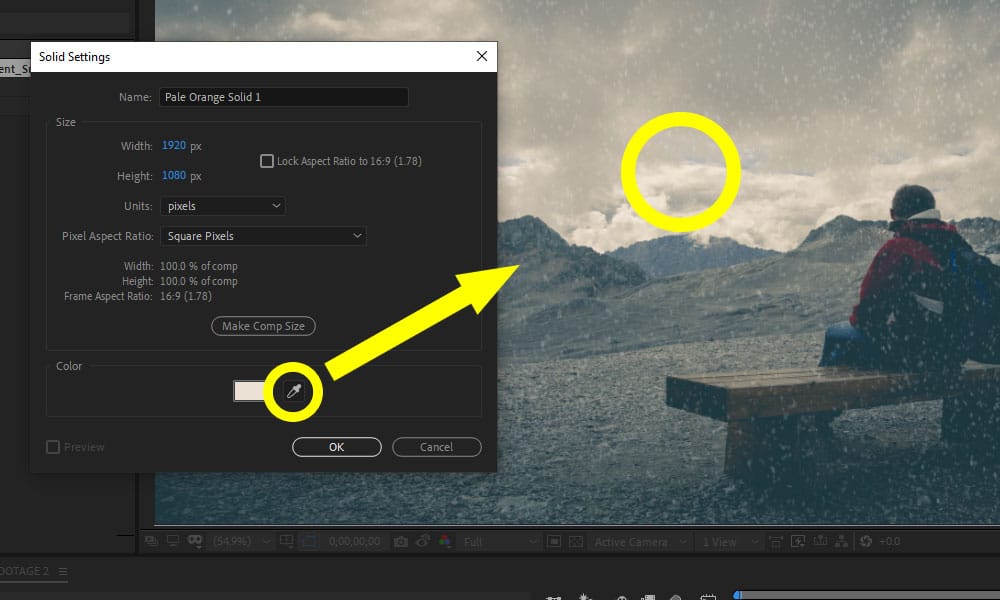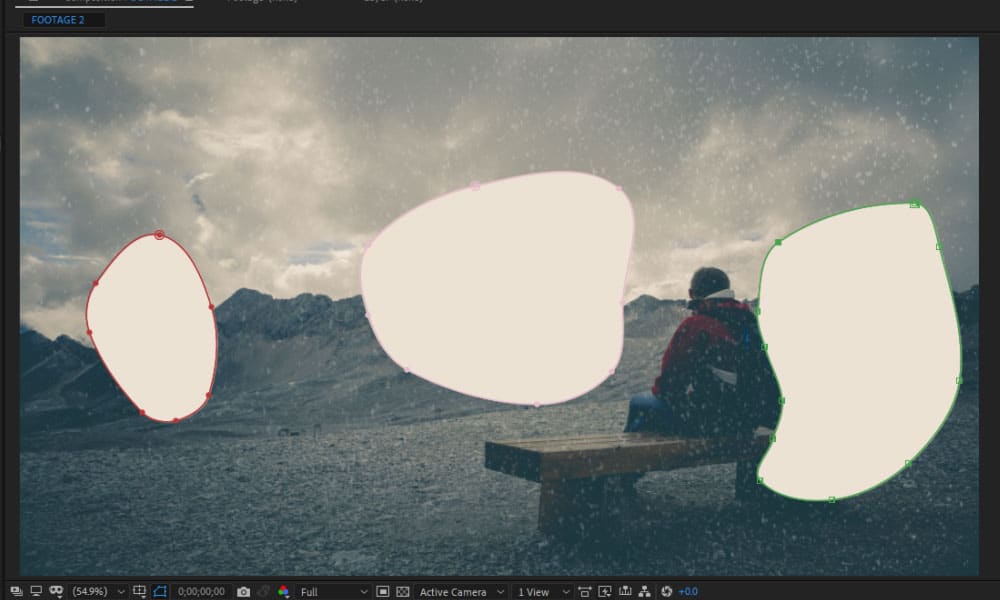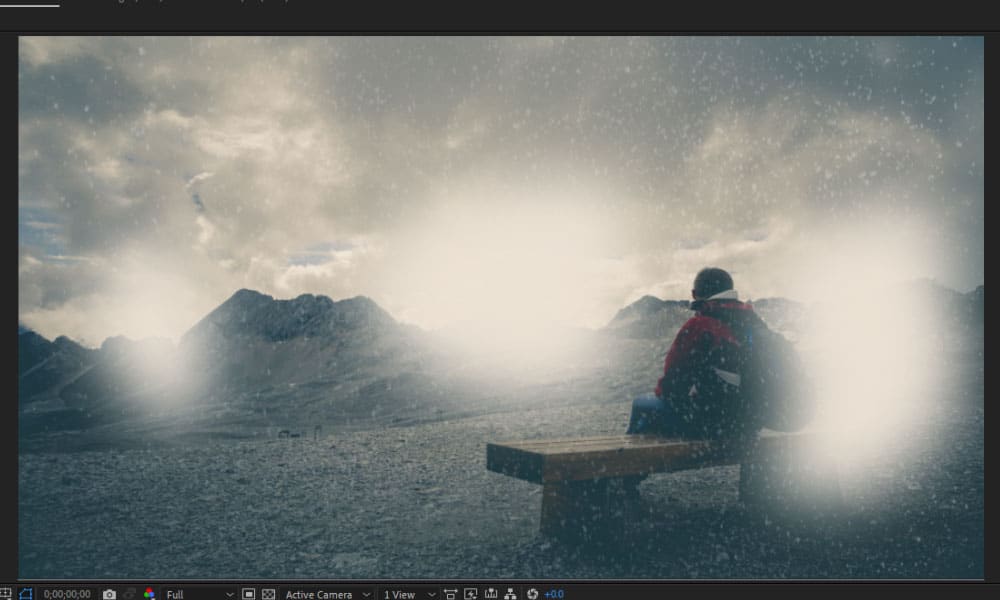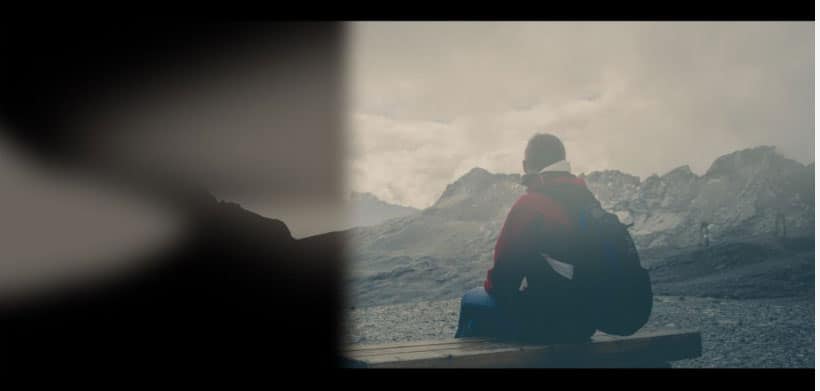How To Create Vfx In After Effects
Reading Time: 7 minutes
Are you having a hard time figuring out how to add VFX in After Effects? Would you like to take your project to the next level but are not quite sure how to go about it?
Well, you're in luck! In this article, we will give you a detailed guideline on the exact steps to take. Using After Effects, you can transform your project into an impressive and visually arresting film with stunning visual effects.
No experience using After Effects? No worries.
Regardless of your skill level, whether an aspiring filmmaker or looking to brush up on your basic knowledge – this guide will work for you 👍
Let's explore how to add VFX in After Effects. But first,
What are VFX?
Visual Effects or VFX are created by placing several video elements on top of each other and then compositing them into a believable, realistic, and way-cooler outcome.
While there are various types of post production software that you can use in this process, Adobe's After Effects is one of the most ideal professional tools. It offers you one of the best options for compositing, motion graphics, and video editing. After Effects is available with the Adobe Suite and has a large community for helpful tutorials and guides.

What is After Effects?
After Effects is a special software that helps you to composite video effects by blending multiple layers of video.
You can add VFX in After Effects by applying them to individual video clips before exporting the complete project.
The results are pretty cool and the possibilities presented are limitless. You can create:
- Show-stopping 3D animations
- 2D cartoon characters
- Cool particle effects such as explosions, smoke, or stars
- Dynamic disappearing effects
- Perfect title designs and animators
- Simulation effects such as snowfall creation which can be customized
- Different effects categories such as blurs, color correction, and perspective category
…and much more
Now, let's get started with how add VFX in After Effects, shall we?
How to Add VFX in After Effects
There are various templates available in After Effects as well as free VFX assets from ProductionCrate that you can use to create your desired motion graphics.
Firstly, we are going to show you something relatively simple – how to add snow to your videos. We will use VFX to composite the snow into our footage. Follow these easy steps to achieve this effect.

The first step is to import all the media you will need to create your visual effect – footage, photos, or graphics. You can simply drag and drop your media files into your After Effects projects tab, or go to File > Import and select your meda.
2. Create A Composition
Next, you create a composition inside the After Effects. Think of a composition as the editing workspace for your clip. The composition will contain your footage and whatever effects you are applying to it. You don't need a different composition for each video, but we recommend it to keep your workspace cleaner and easier to work with.
Drag and drop your footage into this tab to create a new composition. You can also go to Composition > Create New Composition , but dragging and dropping will create a composition based off of your video's parameters automatically.

★ Adding VFX in After Effects ★
Once you've done that you'll see that you now have a new composition. Your composition will automatically open once you've created it. You can rename it to whatever you want to stay organized.

Since this is a snow compositing tutorial we'll need some snow video effects elements. You can shoot your own, create your own with particle system techniques, or use stock assets. We recommend stock assets for speed and simplicity, as well as the large variety of options that already exist.

Import your snow effect by dragging and dropping it into your project window. Now drag and drop it into your composition timeline, and make sure it is above your footage layer.

If your snow is pre-keyed (it comes with an alpha channel) you will already see it working! Also if your effect has a black background, then change your blending mode to Screen in order to see the effect in action.
In addition to this, if you are using loopable snow effects, like we are, make sure you set your footage to loop. There are many ways to do this, here is our favorite.
★ Adding VFX in After Effects ★
Let's make it more realistic. Add depth to your snow effect by adding in a fake haze to your shot. Create a solid that matches the colour of the lighter clouds. You can do this by hitting Ctrl > Y or Layer > New > Solid , then select the eye-dropper icon and pick the lighter cloud colour, and hit OK .

Now you should have a greyish solid (or whatever colour your clouds are). Make sure that new solid is selected in your composition and drag it beneath your snow layer but still above your footage layer. With your solid still selected hit G to select your pen tool.
Now simply draw these cloud-like circular shapes. Make sure to close the shape by selecting the first point again when you're done drawing to close it. Now you should have something like this.

It's not too pretty, but you're actually almost done! With your Solid Layer selected hit M to show those masks you just drew. You'll see them appear in the dropdown.

★ Adding VFX in After Effects ★
We have three masks here, one for each of those circular shapes we drew. Now we just need to feather them out.
Select all your masks by holding Ctrl and clicking each one. Once you have them all selected hit F to bring up the feathering options. This will help soften those hard edges.
With your masks all still selected drag up the feathering amount, I went with 158 for this project.

You can move your mask points around to better fit your horizon, and even adjust the colour with the Fill effect, which you can find in your Effects window. It has the same eyedropper tool we used before. With your solid layer selected hit T to bring up your opacity options. Each layer has this.
Drop your opacity down to whatever looks good, we went with 30% opacity.
The results; the further the footage is, the higher the opacity. This helps to add volume to the snow.

The snow will seem like a cloud; as if it is too far off to be seen by the camera. Mask out the foreground to ensure it doesn't sit behind this fog to add additional depth to your scene.
Various snow effects and layering will really help you sell this effect. For beginners, you can stick with the above steps, but if you want to try something a bit more advanced keep reading.
★ Adding VFX in After Effects ★
Download a background snow effect, these tend to be wider shots showing off more particles. Place the "snow background" behind the foreground, and the "slow snow falling" in front.
This will make the subject look like he is sandwiched between the two snow assets, making them appear as part of the scene. Here's what the layering should look like.

To make the dark halos surrounding the snowflakes invisible, use a screen transfer mode to put in the snow effects. You should be pretty much done by this point. You can continue to adjust the snow colour with a Tritone or Fill effect and selecting the brighter colors from your scene.
Adding VFX in After Effects is a lot of fun, and fortunately, It's pretty simple. After Effects offers you the chance to create a wide range of amazing VFX and motion elements for your video projects.
You can use all sorts of creative image effects here to get the result you desire – there are hundreds of options available. You can also adjust the resolution or time frame to shorten or lengthen the clip.
3. Export the Composition

Here, you export your video into an output file. You can also decide the part of the composition you wish to export by cropping it to the desired size.
And there! You have added your first VFX in After Effects.
Note, however, that After Effects is not used for extensive footage editing. This is because it doesn't feature playback capabilities or layout such as a standard video editing application.
It is thus specifically used to add visual effects to select shots. Thereafter, it exports or links the files to your editing tool.
Wrapping Up – Add VFX in After Effects
To sum up, the exciting thing about visual effects is that the film making industry is very dynamic – there's always something new and exciting to learn. Experiment with the various effects available to create amazing projects and no longer feel that VFX are out of your reach.

Once you get comfortable creating all sorts of cool VFX using After Effects, don't stop there. Keep learning. Discover new tricks and techniques, and grow your expertise as a visual artist. Also, check out our article on the best websites to find After Effects plugins.
We love to help aspiring filmmakers, so if you need assistance when it comes to adding VFX in After Effects just contact us!
Author Bio
After Effects CC, Free Resources for Filmmakers, Post Production Guides
How To Create Vfx In After Effects
Source: https://www.freelancevideocollective.com/how-to-add-vfx-in-after-effects/
Posted by: smithwich1999.blogspot.com

0 Response to "How To Create Vfx In After Effects"
Post a Comment